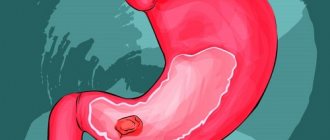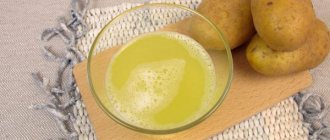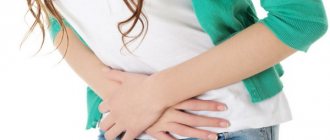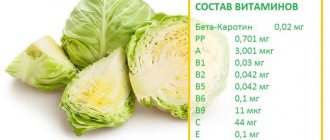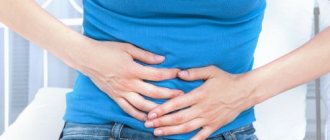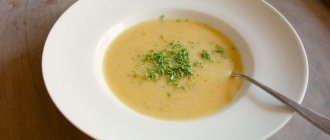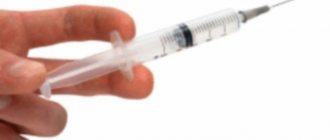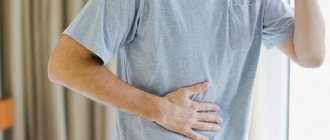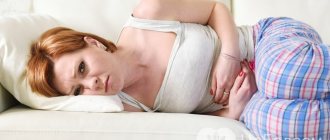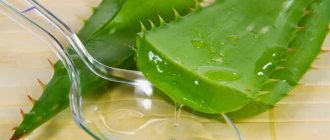General rules
Gastrectomy is an operation to completely remove the stomach with a direct connection of the esophagus to the small intestine. The most common indications for gastrectomy are: stomach cancer , diffuse polyposis , perforation of the stomach wall, advanced peptic ulcers with bleeding.
If the indication for gastrectomy is cancer, then an extended gastrectomy is performed (at the same time the omentum, spleen and regional lymph nodes are removed). As a result, due to the absence of a stomach (an organ for mechanical/chemical processing of food) and the entry of food directly from the esophagus into the small intestine, new specific anatomical and physiological conditions for the digestion process are formed in the body.
Adaptation of the body to new nutritional conditions takes quite a long time (8-12 months) and is often accompanied by complications such as:
- Reflux esophagitis is an inflammation of the esophagus caused by the reflux of bile and jejunal contents into it.
- Dumping syndrome : caused by the rapid entry of large volumes of insufficiently processed food from the esophagus into the small intestine and is manifested by sweating , weakness, dizziness , palpitations, and sometimes single vomiting after eating.
- Anemic syndrome.
- Progressive weight loss.
Nutrition after gastrectomy is the most important component of the rehabilitation process. Diet therapy for a removed stomach includes several stages and begins with the sequential administration of strict surgical diets (0A, 0B, 0B). On the first or second postoperative day, the patient is advised to fast. From 2-3 days the patient is allowed to give weak tea, mineral water, rosehip decoction, and slightly sweetened jelly.
If intestinal function does not suffer, from 4-5 days the diet is expanded with vegetable puree soups, soft-boiled eggs, steamed curd soufflé, buckwheat/rice liquid porridge. On days 8-9, mashed potatoes and steamed fish balls/meatballs are added to the diet. From 14-15 days the patient is transferred to the pureed version of Diet No. 1 or surgical 1.
The most important task of a therapeutic diet for people without a stomach is to overcome protein and vitamin-mineral deficiency that occurs in most patients due to insufficient/malnutrition in the first postoperative days, the breakdown of tissue proteins, blood loss and fever . Therefore, from 4-5 days onwards, each meal should contain protein products, and it is necessary to transfer the patient to a physiologically nutritious diet as early as possible, including a wide range of products, taking into account the body’s ability to digest food.
All dishes are steamed/boiled and wiped thoroughly. Preference should be given to protein foods. The diet includes low-fat broth, pureed vegetable soups with cereal broths, dishes from lean beef/chicken and fish (pike perch, cod, carp, hake), steamed omelet/soft-boiled eggs, milk as part of the dishes. It is allowed to include boiled vegetables in the diet and serve them in the form of puree - potatoes and carrots, cauliflower, stewed zucchini and pumpkin. You can prepare viscous porridges/casseroles (without sugar) from cereal products (rice, oatmeal, buckwheat).
Vegetable oil, butter and sour cream can only be used as a seasoning for ready-made dishes. It is recommended to prepare jelly/mousse/jelly from fruits. Dried bread can be included in the diet no earlier than a month after surgery. Fruit juices and unsweetened tea are allowed. You can drink kefir 1.5-2 months after surgery.
The diet includes the exclusion from the diet of baked goods, pickles, marinades, smoked meats, offal, fatty meats, canned food, sausages, legumes, chocolate, ice cream, mushrooms, raw vegetables (white cabbage, onions and garlic, radishes, spinach, sorrel), coffee , carbonated drinks.
In order to prevent dumping syndrome, foods containing easily digestible carbohydrates (sugar, honey, jam, sweets) are limited in the diet. The range/volume of food intake must be expanded gradually. So, in the first two weeks, the portions are increased: to 50 ml on the 3rd day, to 200/250 ml on the 7th day and to 300/400 ml on the 10th day. The amount of liquid should not exceed 200 ml at a time.
If the patient has concomitant diseases of the gastrointestinal tract ( pancreatitis , colitis ), then changes are made to the diet. constipation occurs, you should include boiled beets, vegetable juices, and prune decoction in your diet. After 4-6 months, if the patient’s condition is normal, it is allowed to gradually switch to an unprocessed version of the diet. At the same time, nutritional rules, methods of culinary processing of products and restrictions remain the same.
Nutrition after removal of the stomach due to cancer requires special attention. In this case, preoperative preparation is necessary, including a high-calorie diet, especially against the background of preoperative/postoperative chemotherapy , accompanied by a persistent decrease in appetite, changes in taste/smell, which contributes to the development of nutritional deficiency.
As a rule, stage 2-4 cancer patients already have nutritional deficiency (deficiency of nutritional supplements, vitamins and minerals), which is due to a sharp acceleration of catabolism and inhibition of protein synthesis. Therefore, in the preoperative period, the diet of cancer patients should have a calorie content of 4000-4500 kcal/day in order to eliminate/reduce protein-energy deficiency if possible.
Modern approaches to the management of cancer patients with nutritional deficiency in the preoperative period suggest the start of the introduction of enteral nutritional mixtures 12-14 days before surgery, if it is assumed that the patient after surgery will take less than 60% of the volume of adequate nutrition for 7-10 days. This makes it possible to more effectively correct immune deficiency/nutritional deficiency and prepare the body for surgery and chemotherapy.
Accordingly, in the postoperative period, if the patient is prescribed complete endogenous nutrition, this will lead to a rapid (catastrophic) depletion of BZH reserves. Therefore, the diet after removal of the stomach for cancer involves the introduction of protein enpit (40 g / 200 ml of water) in the first 24 hours of 30-50 g of solution through a nasointestinal tube inserted into the anastomosis, and later, orally, taking into account the energy needs of cancer patients, which averages 25/30 kcal/kg/day, and in cases of severe nutritional deficiency - at least 35 kcal/kg/day.
The choice of nutritional mixture and the duration of its use is determined by the metabolic needs of the patient and the functional state of the gastrointestinal tract. As practice shows, the use of nutritional mixtures enriched with nucleotides, arginine and omega-3 fatty acids makes it possible to more effectively eliminate nutritional deficiency and improve the patient’s nutritional status.
General rules and features of eating after surgery
Immediately after surgery, the patient is transferred to enteral nutrition. Liquid food is introduced into the body through special tubes. If no complications arise, then on the second or third day the patient begins to eat on his own.
Basic rules that the patient must adhere to:
- eat often (up to 8 times a day), but in very small portions;
- listen to your feelings: stop eating if you feel full;
- drink plenty of fluids (at least 1.5 liters);
- Chew food thoroughly, even if the menu only contains grated dishes.
Advice from a gastroenterologist!
Some people have problems absorbing fat after surgery. Such a deviation can lead to weight loss, and even vitamin deficiency. You should ask for an endoscopic examination if the following symptoms develop within three weeks after surgery:
- frequent urge to defecate;
- gurgling sounds from the stomach;
- the stool is very light, foamy and greasy.
To eliminate the problem, it will be enough to take a course of drugs containing pancrelapase.
Authorized Products
The diet after gastric removal includes:
- Slimy soups made from buckwheat, rice, oatmeal with the addition of an egg-milk mixture, butter, low-fat cream to the finished dish.
- Low-fat varieties of red meat (veal/beef), rabbit, chicken/turkey, well boiled and minced through a meat grinder.
- White fish (pike, cod, hake, pollock), steamed/boiled.
- Cereal dishes in the form of liquid porridge from rice, buckwheat, oatmeal, with the addition of butter.
- Chicken eggs in the form of a steam omelet/soft-boiled
- Boiled/stewed well-chopped vegetables (potatoes, carrots, beets, cauliflower, zucchini, pumpkin).
- Milk and dishes based on it, low-fat cream, calcined cottage cheese, butter/vegetable oil.
- Juices from fresh berries, rosehip infusion, milk jelly, weak tea with cream.
Table of permitted products
| Proteins, g | Fats, g | Carbohydrates, g | Calories, kcal | |
Vegetables and greens | ||||
| zucchini | 0,6 | 0,3 | 4,6 | 24 |
| potato | 2,0 | 0,4 | 18,1 | 80 |
| carrot | 1,3 | 0,1 | 6,9 | 32 |
| beet | 1,5 | 0,1 | 8,8 | 40 |
| pumpkin | 1,3 | 0,3 | 7,7 | 28 |
Cereals and porridges | ||||
| buckwheat (kernel) | 12,6 | 3,3 | 62,1 | 313 |
| cereals | 11,9 | 7,2 | 69,3 | 366 |
| white rice | 6,7 | 0,7 | 78,9 | 344 |
Bakery products | ||||
| white bread crackers | 11,2 | 1,4 | 72,2 | 331 |
Confectionery | ||||
| jelly | 2,7 | 0,0 | 17,9 | 79 |
| marshmallows | 0,8 | 0,0 | 78,5 | 304 |
| paste | 0,5 | 0,0 | 80,8 | 310 |
Raw materials and seasonings | ||||
| sugar | 0,0 | 0,0 | 99,7 | 398 |
Dairy | ||||
| milk | 3,2 | 3,6 | 4,8 | 64 |
| cream | 2,8 | 20,0 | 3,7 | 205 |
Cheeses and cottage cheese | ||||
| cottage cheese | 17,2 | 5,0 | 1,8 | 121 |
Meat products | ||||
| boiled beef | 25,8 | 16,8 | 0,0 | 254 |
| boiled veal | 30,7 | 0,9 | 0,0 | 131 |
| rabbit | 21,0 | 8,0 | 0,0 | 156 |
Bird | ||||
| boiled chicken | 25,2 | 7,4 | 0,0 | 170 |
| turkey | 19,2 | 0,7 | 0,0 | 84 |
Eggs | ||||
| chicken eggs | 12,7 | 10,9 | 0,7 | 157 |
Oils and fats | ||||
| butter | 0,5 | 82,5 | 0,8 | 748 |
| ghee | 0,2 | 99,0 | 0,0 | 892 |
Non-alcoholic drinks | ||||
| mineral water | 0,0 | 0,0 | 0,0 | — |
| black tea with milk and sugar | 0,7 | 0,8 | 8,2 | 43 |
Juices and compotes | ||||
| juice | 0,3 | 0,1 | 9,2 | 40 |
| jelly | 0,2 | 0,0 | 16,7 | 68 |
| rose hip juice | 0,1 | 0,0 | 17,6 | 70 |
| * data is per 100 g of product | ||||
Products after stomach removal
Patients without a stomach are fed parenterally or through a tube in the first days after its resection. It depends on the severity of their condition. Parenteral nutrition is the supply of essential proteins, carbohydrates and fatty acids through infusions of special solutions through a vein. Tube feeding is carried out through a tube inserted into the mouth and esophagus. The food is served liquid and easily digestible. These requirements are adhered to due to the lack of enzymes synthesized by the stomach and the inability to digest complex food components without their help. After a couple of days, after conducting a control study of the state of the gastrointestinal tract, the patient is transferred to oral feeding with pureed food. Mostly it's porridge and baked apples.
THIS IS REALLY IMPORTANT! Right now you can find out a cheap way to get rid of stomach pain. FIND OUT >>
Fully or partially limited products
The diet after removal of the stomach excludes:
- Strong (concentrated) broths based on meat/fish, mushrooms.
- Fresh bread, bakery/confectionery products, pastries, dough products.
- Fatty meat/fish and products based on them (sausages, canned food, smoked meats).
- Solid cooking/animal fats, fatty cottage cheese, raw vegetables/fruits, fried foods, mushrooms, pickles, various snacks, fermented milk products, cheese, sour cream.
- Sauces/seasonings, spices, concentrated vegetable/fruit juices, carbonated drinks, strong tea/coffee, alcoholic drinks.
Table of prohibited products
| Proteins, g | Fats, g | Carbohydrates, g | Calories, kcal | |
Vegetables and greens | ||||
| vegetables | 2,5 | 0,3 | 7,0 | 35 |
| vegetables legumes | 9,1 | 1,6 | 27,0 | 168 |
| swede | 1,2 | 0,1 | 7,7 | 37 |
| cabbage | 1,8 | 0,1 | 4,7 | 27 |
| sauerkraut | 1,8 | 0,1 | 4,4 | 19 |
| green onion | 1,3 | 0,0 | 4,6 | 19 |
| bulb onions | 1,4 | 0,0 | 10,4 | 41 |
| canned cucumbers | 2,8 | 0,0 | 1,3 | 16 |
| white radish | 1,4 | 0,0 | 4,1 | 21 |
| canned tomatoes | 1,1 | 0,1 | 3,5 | 20 |
| horseradish | 3,2 | 0,4 | 10,5 | 56 |
| spinach | 2,9 | 0,3 | 2,0 | 22 |
| sorrel | 1,5 | 0,3 | 2,9 | 19 |
Mushrooms | ||||
| mushrooms | 3,5 | 2,0 | 2,5 | 30 |
Cereals and porridges | ||||
| corn grits | 8,3 | 1,2 | 75,0 | 337 |
| pearl barley | 9,3 | 1,1 | 73,7 | 320 |
| millet cereal | 11,5 | 3,3 | 69,3 | 348 |
| barley grits | 10,4 | 1,3 | 66,3 | 324 |
Flour and pasta | ||||
| pasta | 10,4 | 1,1 | 69,7 | 337 |
Bakery products | ||||
| bagels | 16,0 | 1,0 | 70,0 | 336 |
| wheat bread | 8,1 | 1,0 | 48,8 | 242 |
| rye-wheat bread | 8,1 | 3,4 | 42,2 | 222 |
| bran bread | 7,5 | 1,3 | 45,2 | 227 |
Confectionery | ||||
| jam | 0,3 | 0,2 | 63,0 | 263 |
| candies | 4,3 | 19,8 | 67,5 | 453 |
| pastry cream | 0,2 | 26,0 | 16,5 | 300 |
| dough | 7,9 | 1,4 | 50,6 | 234 |
Ice cream | ||||
| ice cream | 3,7 | 6,9 | 22,1 | 189 |
Cakes | ||||
| cake | 4,4 | 23,4 | 45,2 | 407 |
Chocolate | ||||
| chocolate | 5,4 | 35,3 | 56,5 | 544 |
Raw materials and seasonings | ||||
| mustard | 5,7 | 6,4 | 22,0 | 162 |
| ginger | 1,8 | 0,8 | 15,8 | 80 |
| ketchup | 1,8 | 1,0 | 22,2 | 93 |
| mayonnaise | 2,4 | 67,0 | 3,9 | 627 |
| ground black pepper | 10,4 | 3,3 | 38,7 | 251 |
| chilli | 2,0 | 0,2 | 9,5 | 40 |
Dairy | ||||
| sour cream | 2,8 | 20,0 | 3,2 | 206 |
Meat products | ||||
| pork | 16,0 | 21,6 | 0,0 | 259 |
| salo | 2,4 | 89,0 | 0,0 | 797 |
Sausages | ||||
| smoked sausage | 28,2 | 27,5 | 0,0 | 360 |
| dry-cured sausage | 24,1 | 38,3 | 1,0 | 455 |
| sausages | 12,3 | 25,3 | 0,0 | 277 |
Bird | ||||
| smoked chicken | 27,5 | 8,2 | 0,0 | 184 |
| duck | 16,5 | 61,2 | 0,0 | 346 |
| smoked duck | 19,0 | 28,4 | 0,0 | 337 |
| goose | 16,1 | 33,3 | 0,0 | 364 |
Fish and seafood | ||||
| dried fish | 17,5 | 4,6 | 0,0 | 139 |
| smoked fish | 26,8 | 9,9 | 0,0 | 196 |
| canned fish | 17,5 | 2,0 | 0,0 | 88 |
Oils and fats | ||||
| creamy margarine | 0,5 | 82,0 | 0,0 | 745 |
| animal fat | 0,0 | 99,7 | 0,0 | 897 |
| cooking fat | 0,0 | 99,7 | 0,0 | 897 |
Alcoholic drinks | ||||
| white dessert wine 16% | 0,5 | 0,0 | 16,0 | 153 |
| vodka | 0,0 | 0,0 | 0,1 | 235 |
| cognac | 0,0 | 0,0 | 0,1 | 239 |
| beer | 0,3 | 0,0 | 4,6 | 42 |
Non-alcoholic drinks | ||||
| bread kvass | 0,2 | 0,0 | 5,2 | 27 |
| cola | 0,0 | 0,0 | 10,4 | 42 |
| sprite | 0,1 | 0,0 | 7,0 | 29 |
| tonic | 0,0 | 0,0 | 8,3 | 34 |
| black tea | 20,0 | 5,1 | 6,9 | 152 |
| energy drink | 0,0 | 0,0 | 11,3 | 45 |
| * data is per 100 g of product | ||||
Reviews and results
Nutritional therapy after gastrectomy, as evidenced by patient reviews, is an essential component of treatment in the postoperative period. The recovery process, rehabilitation periods and the course of the postoperative period depend on its proper organization/compliance.
- “... Stage 3 stomach cancer. He was operated on - his stomach was removed, and he underwent 2 courses of chemotherapy. The condition after the operation was serious. They were fed through a tube with special mixtures. After 8 days, at the same time, he began to eat very limited food. I started with slimy soups, grated rice porridge, semi-liquid cottage cheese, and jelly. Gradually, poultry meat in the form of minced meat and steamed omelettes were included in the diet. Now (2 months have already passed) I have been switched to pureed Diet No. 1. My wife steams or boils everything and chops it very carefully. As before, I use enteral formulas, since I still have a weight deficit of 4.8 kg. I hope to recover at least a little, the main thing is that there is no recurrence of the tumor.”
Medical nutrition in the first days after gastric surgery
During the first days after surgery, therapeutic fasting is indicated. The patient may be given vitamin liquids enterally. Further, the diet should consist only of pureed dishes. This will help avoid postoperative complications, including bowel obstruction, diarrhea, constipation and dehydration. The body needs time to recover after surgery, and pureed food will help achieve this goal.
Other advice from a gastroenterologist that should be taken into account when organizing nutrition after gastric surgery:
- Drink enough regular clean water. If postoperative diarrhea has developed, then you should additionally drink pharmaceutical rehydration solutions.
- Avoid sugar completely. White crystals may contribute to the development of dumping syndrome. When sugar enters the esophagus, severe nausea, diarrhea and even vomiting develop. In the first weeks, it is worth minimizing the consumption of even natural sweets, but in the long term it will be possible to consume fruits and juices.
Also, after surgery, there is a decrease in acidity (hypochlorhydria) or even a complete absence of acid in the stomach (achlorhydria). Without stomach acid, digestive enzymes remain inactive, making it difficult to digest proteins, fats and carbohydrates. Because of this, many patients in the rehabilitation department complain that their stomach is “stuck.” To adjust the diet, proton pump inhibitors are prescribed. At the same time, pills sometimes have to be taken for many years or even decades after surgery.
